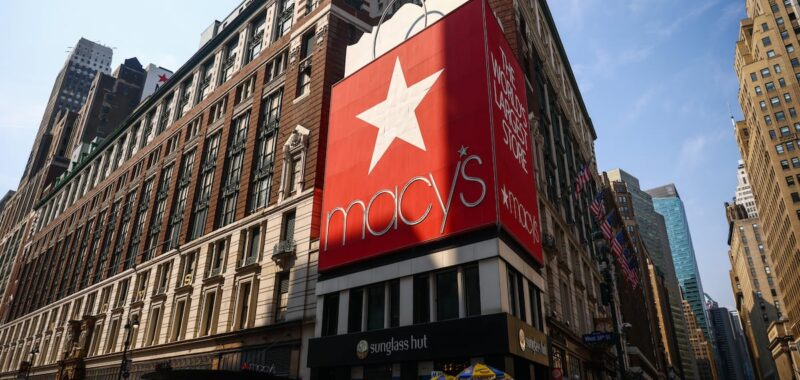
Last week, Walmart reported a surprisingly strong jump in revenue, which the retail giantâs leaders interpreted as a sign of the American consumerâs resilience. It could just as easily be the opposite: an indication that stretched shoppers are looking to trade down.
Macyâs is intimately familiar with the trading down phenomenon, mostly as a victim. For years, customers have been abandoning the department store operator for big-box stores, Amazon and fast-fashion brands, all of which can sell clothes cheaper and move more quickly to hop onto trends. After fending off a takeover bid, the company is trying to arrest its long decline by making its stores desirable places to shop again, even if it canât offer the lower prices. Its freshened-up department stores feature a growing assortment of private labels and well-known brands, as well as cosmetics, fragrance and other categories where in-person shopping is still the norm. Itâs a complicated strategy, and while early results are promising, investors will be looking to see more progress in quarterly results out Wednesday. But Macyâs had little hope of winning the race to the bottom it was previously engaged in for much of the last two decades.
Winning the Footrace
On Tuesday, Arcâteryx and Salomon parent Amer Sports also reports quarterly results. The company, which went public earlier this year and also owns equipment maker Wilson as well as a handful of ski brands, hasnât found its footing in the booming sportswear market. Though its biggest brands are growing rapidly, their trajectory suffers in comparison to other upstarts; Salomon, for instance, is a key player in the performance running shoe craze, but hasnât quite achieved the overnight ubiquity of On or Hoka.
Amer is betting on a direct-to-consumer pivot to help its brands make the leap from niche suppliers to athletes and gorpcore enthusiasts to a more mainstream audience. Arcâteryx and Salomon are adding dozens of stores â including a Salomon flagship on Parisâ Champs-Ãlysées that opened shortly before the Olympic Games began. That strategy is clearly working, with Arcâteryx driving a 44 percent year-on-year increase in sales in Amerâs technical apparel division. The one wrinkle here is that, Paris aside, much of that growth has come from China, where an economic slowdown may make it difficult to keep up the pace.
The Week Ahead wants to hear from you! Send tips, suggestions, complaints and compliments to brian.baskin@businessoffashion.com.

